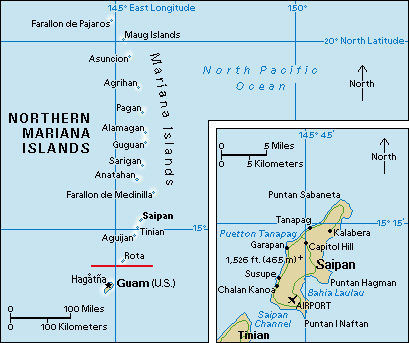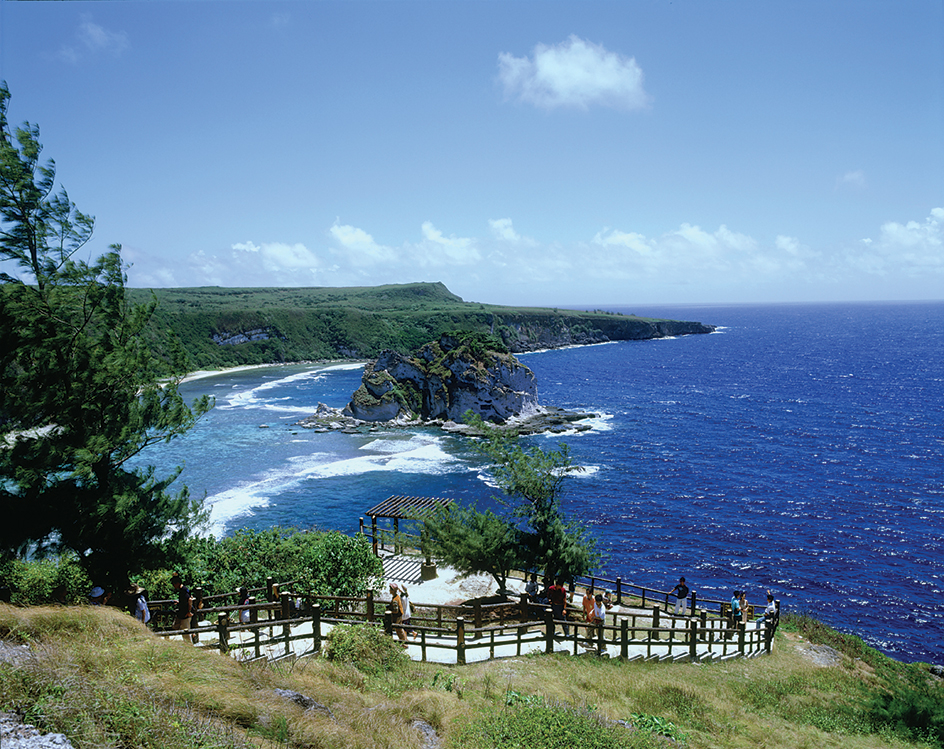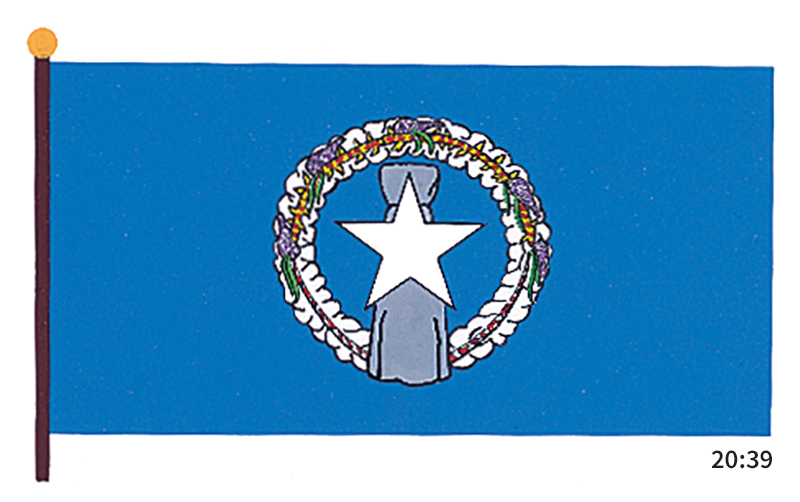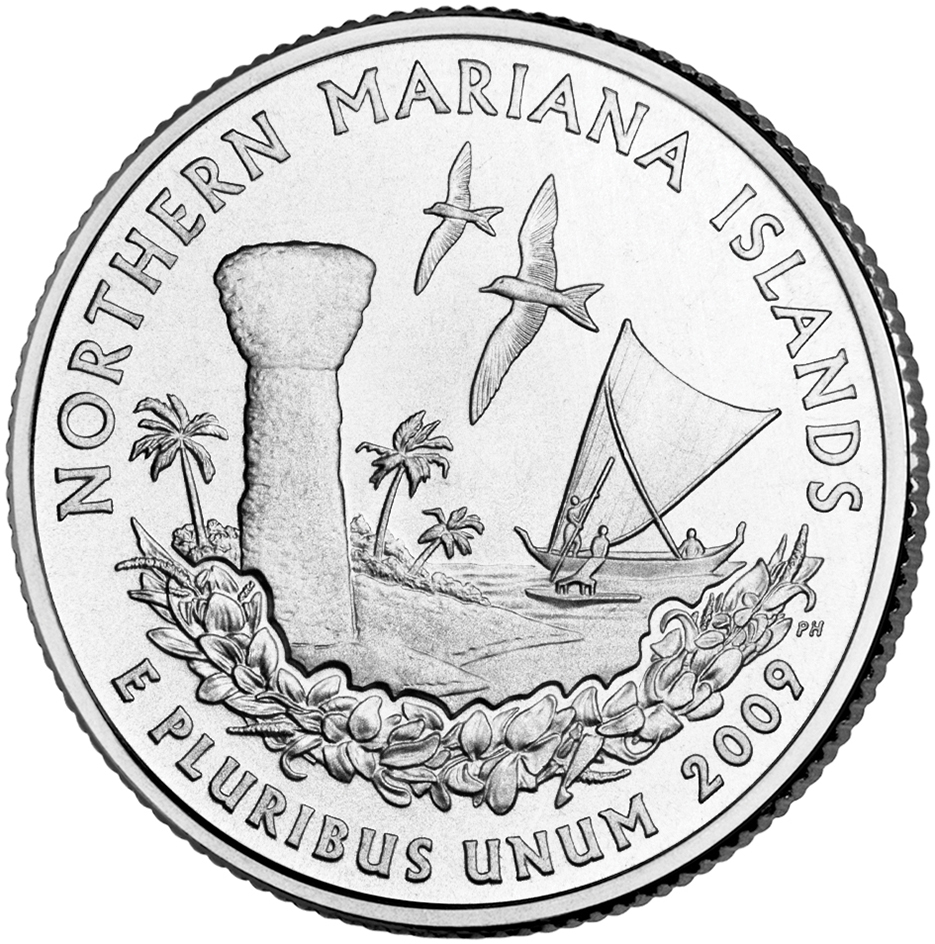Northern Mariana Islands, Commonwealth of the, is a chain of 16 islands in the Pacific Ocean. The islands are a commonwealth of the United States. They lie about 1,000 miles (1,600 kilometers) south of Japan and about 1,500 miles (2,400 kilometers) east of the Philippines. The Northern Marianas extend about 337 miles (543 kilometers) from north to south and cover about 178 square miles (460 square kilometers) of land. They are part of a larger region in the Pacific Ocean called Micronesia. Together with Guam, the Northern Marianas make up the Mariana Islands.

About 57,000 people live in the Northern Marianas. About 90 percent of the population lives on Saipan, the capital and largest island. Most of the rest of the people live on Tinian, the second largest island; and Rota, the third largest. Garapan, on Saipan, is one of the largest communities. Government offices are in Susupe and Capitol Hill, which are also on Saipan.

In 1947, the United States began administering the Northern Marianas as part of the Trust Territory of the Pacific Islands. The Northern Marianas became a self-governing commonwealth of the United States in 1986. The commonwealth government handles the commonwealth’s internal affairs. The United States is responsible for defense and foreign affairs. Island residents are U.S. citizens, but they cannot vote in presidential elections.
Government.
A governor heads the commonwealth government. The governor is assisted by a lieutenant governor. The voters elect both these officials to four-year terms. A two-house legislature makes the commonwealth’s laws. The Senate has 9 members, and the House of Representatives has 20 members. Senators are elected to four-year terms, and representatives are elected to two-year terms. The voters of Rota, Tinian, and Saipan also elect their own mayor. The remaining islands elect and share one mayor.
People.
About one-fourth of the people of the Northern Marianas are Chamorros. Their ancestors had begun settling on the islands by about 1500 B.C. Another main group is the Carolinians, whose ancestors began to settle on Saipan around 1815 after typhoons destroyed their homes in southern Micronesia. Foreign workers account for over half the population. Filipinos make up the largest group of these workers.

At home, the Chamorros speak Chamorro and the Carolinians speak Carolinian. But English is also widely spoken in the Northern Marianas, particularly among young people. Many older people speak conversational Japanese. The majority of the people are Roman Catholics. However, many islanders also hold beliefs and observe taboos (forbidden actions) from local religions.

The law requires children between the ages of 5 and 17 to attend school. Postsecondary education is available from Northern Marianas College, which mostly grants degrees at the associate’s level. The school does, however, grant bachelor’s degrees in business and education.
Many houses on the islands are made of wood or concrete block with sheet metal roofs. Modern apartment buildings and condominiums have been built on Saipan.
Land and climate.
The Northern Marianas are formed by the peaks of a huge undersea mountain range. The range rises more than 6 miles (9.5 kilometers) off the bottom of the Mariana Trench, the deepest known spot in the world’s oceans. The northern islands are covered with volcanic rock. Some of them still have active volcanoes. Limestone terraces cover volcanic rock on the southern islands. The Maug Islands, a cluster of three islands, are sometimes counted as one island. The Northern Marianas have an average year-round temperature of about 84 °F (29 °C) and an average annual rainfall of about 84 inches (213 centimeters).
Economy.
The government is the major employer in the Northern Marianas. Many islanders hold government jobs. Tourism ranks as the most important economic activity. Imports in the Northern Marianas far outnumber exports. More than half of the work force in the Northern Marianas are foreigners. The majority of the garment workers are Chinese or Thai. Many islanders hold government jobs.
History.
The ancestors of the present-day Chamorros had begun living on the Northern Marianas by about 1500 B.C. In A.D. 1521, Ferdinand Magellan, a Portuguese explorer in the service of Spain, discovered Rota and Guam. Spain claimed the islands in 1565. But Spain did not begin ruling them until 1668, after Spanish Jesuits established a missionary settlement on Guam.
At the end of the Spanish-American War in 1898, Spain turned Guam over to the United States. The next year, Spain sold the Northern Marianas to Germany. Germany ruled the Northern Marianas until the Japanese seized them at the beginning of World War I in 1914. After the war ended in 1918, a mandate from the League of Nations gave Japan control of the islands.
The United States gained control of the Northern Marianas in 1944, during World War II. In 1947, the United States began administering the islands as part of the United Nations Trust Territory of the Pacific Islands. In 1975, the United States agreed to make the Northern Marianas a self-governing U.S. commonwealth. The agreement took effect Nov. 3, 1986.
See also Pacific Islands, Trust Territory of the; Saipan.
